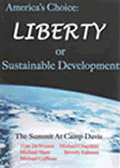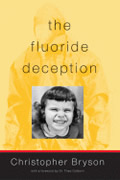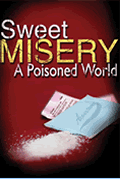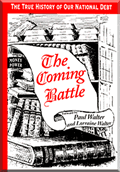THE
POWER ELITE PLAYBOOK: FASCISM AND FALSE FLAGS = WAR
PART 17
Deanna
Spingola
December 14, 2008
NewsWithViews.com
Nagata Tetsuzan, in company with Obata Toshiro and Okamura Yasuji (all three trained in military intelligence) and Prince Hirohito, had met secretly at the German spa Baden-Baden on October 27, 1921 to plan a total war against the West.[1] With the exception of Hirohito, all were then serving at Japanese embassies in Europe. They developed strategies to purge the army of the Samurai (knightly) leadership of the Choshu clan, to reorganize and modernize the army, and a plan to dominate Manchuria. Another young officer-attendee was Tojo Hideki, the future prime minister who would launch the Pacific war, the imperial scheme.
Corporations, like Matsui, first targeted Manchuria’s natural resources in the First Sino-Japanese War from August 1, 1894 to April 17, 1895. Japan, ready to accommodate Japanese corporations and with backing from foreign banks, like J. P. Morgan, declared war on Tsarist Russia on February 8, 1904 specifically to gain control of the strategic Kwantung Peninsula, the area leased for 25 years to Russia by China in March 1898. Japan was granted that area after the war and established the Kwantung Garrison in 1906. The semi-autonomous Kwantung Army, part of Japan’s Imperial Army took its name from the Kwantung (meaning east of Shanhaiguan) Peninsula,
General Araki Sadao was the Japanese military attaché in Russia during WWI.[2] He became the Commandant of the Army War College in 1928. He indoctrinated the younger pseudo-patriotic naïve officers with a radical-right-wing agenda. Araki embraced Bushido (“The Way of the Warrior”) and permitted officers to wear swords for the first time since the samurai rebellions of the 19th century.[3]
The ultranational (superior-nation complex) objective was to seize the government, divorce it from the people and transform it into a profitable military dictatorship by removing opposing imperial advisors, creating chaos among radical students and unifying the many secret societies. The military foundation of the conspiracy was set by 1929. They installed General Honjo Shigeru, a general in the Imperial Japanese Army during the early period of the Second Sino-Japanese War (1904-1905). He served as commander of the Kwantung Army from August 1, 1931 to August 8, 1932. Honjo was an 1897 graduate from the Imperial Japanese Army Academy. Some of his classmates included future Prime Minister Abe Nobuyuki, and generals Araki and Matsui. He would prevent any potential interference. The Kwantung Army then had 12,000 willing men and would grow to 700,000 by 1941.[4]
Araki, with three other conspirators, devised the Mukden Incident by May 31, 1931. On September 18, 1931, a non-strategic section of Japan's South Manchuria Railway was expertly dynamited by Japanese militarists. The Japanese, to be persuasive, claimed that the railway section was vital. It wasn’t! Asbestos-laden buildings unable to attract profitable renters and in need of being torn down and replaced would also serve the same purpose. Japan blamed the incident on the Chinese who, responding to the explosion, came running to investigate. The Japanese were prepared to invade; they already had the major munitions hidden at the Officer’s club in Mukden. This staged false flag incident was the pretext for an attack on the morning of September 19, 1931 against the Chinese garrison at Beidaying, eight hundred meters away from the incident. Five hundred unprepared Chinese soldiers perished; two Japanese soldiers died. Some researchers, such as David Bergamini, claim that Hirohito knew and approved of the whole plot. As a civilian, he was interned in a Japanese concentration camp in the Philippines.
In February 1932, Japan renamed Manchuria. It would now be Manchukuo. It was literally the kingdom of the Kwantung Army whose intent was to seize all of Manchuria, Mongolia and Northern China.[5] By 1936, the Kwantung Army managed Manchuria. Young bureaucrat Kishi Nobusuke, recognizing a great business opportunity, convinced his uncle to move the headquarters of his newly-formed Nissan zaibatsu (conglomerate) to Manchukuo. Nissan developed its iron and coal mines, timber and opium production. Life was luxurious for the 900,000 Japanese citizens now living in Manchuria as compared to the faltering economy in Japan.[6]
In the 1920s and 1930s, there were two opposing factions (similar to America’s two-party charade) both of which endorsed totalitarian, fascist political philosophies: The ultranationalist Kodoha was led by General Araki who became Minister of War in 1933. According to a Time Magazine article dated January 23, 1933, Araki considered Hirohito as “utterly perfect,” the “Son of Heaven.” Hence, his soldiers rendered absolute obedience and abided by the strict government regulations which prohibited criticism of the emperor or his policies.
The other clique, called the Control Group (Toseiha) was led by General Ugaki Kazushige and was composed of power-seeking, aggressive opportunistic officers who were gradually moving Japan towards a military dictatorship with an increased military budget. Uncooperative politicians were assassinated (as Kennedy and others in our own country) in order to establish a military dictatorship and escalate warfare in order to impose a colonial Japanese empire on the Asian mainland. This group wanted to conquer Soviet Siberia and China, followed by total war with the West.[7] Total war required the cooperation of the bureaucracy and the zaibatsu to maximize Japan’s industrial and military capacity. In 1936, the two factions would merge to form the Imperial Way Faction nationalist party.
With the goal of overthrowing the political and economic elite, allegedly to save Japan from the evil influences controlling the emperor, the far-right terrorist organization Ketsumeidan (League of Blood), composed of student radicals and young Japanese military cadets led by Inoue Nissho, assassinated Finance Minister Inoue Junnosuke (no relation) on February 9, 1932 and Baron Dan Takuma, the Director General of Mitsui, Japan’s largest zaibatsu conglomerate on March 5, 1932. On May 15, 1932, Prime Minister Inukai Tsuyoshi, born to a former samurai family, was assassinated because he objected to the army’s expansion into Manchuria. He wanted to negotiate for peace with China. Attempts to bomb the Mitsubishi Bank and Tokyo police headquarters occurred on the same day.[8] Inoue Nissho, after minimal rehabilitation, would maintain a prominent right-wing position after WWII.
By 1933, Tokyo faced the largest public debt in Japanese history. The Diet (Japan’s parliament) made it substantially larger by authorizing massive loans in order to pay the expenses of the Army and Navy and to balance the budget on paper. The yen was taken off the gold standard, contributing to endless spending and an inevitable crash. War Minister General Araki wasn’t interested or concerned about fiscal issues.[9] Araki served as Minister of Education from 1938 to 1939 during which time he integrated militaristic ideals and fascism into the national education system.[10]
Fascism may include the following characteristics: extreme forms of patriotism and nationalism; an authoritarian hierarchical, highly centralized government; neutralization of individual rights; economic regimentation due to covert complicity between big corporations and government officials; suppression of opposition through media vilification; militarization of local police; military appointments based on a corporate agenda; propagated fear of communism, terrorism, false flag incidents etc. to control the population and usurp individual freedoms while pretending to purge imagined enemies; corruption of capitalism – seen in the devised consolidation of business, stock market manipulation, job outsourcing and procurement of cheap labor at the expense of the middle class.
On July 7, 1937 there was another false flag attack at the Marco Polo Bridge, outside of Peking. This incident, similar to the Mukden Incident, escalated into a Japanese invasion of China which allegedly would be over in three months. President Roosevelt threatened sanctions but the many banker-backed members of Congress resisted. Additionally, Wall Street’s pro-Japanese lobby backed by the J. P. Morgan Bank and some influential American corporations wanted to protect their huge investments in Japan, Manchuria, Korea and Taiwan.[11]
The false flag incident took place just prior to the bloody siege of Shanghai and Japan’s invasion of Nanking. The Prime Minister at the time was 46-year-old Prince Konoe Fumimaro, who still resented what he considered the racial rebuff of the Versailles Treaty which he asserted protected Anglo-American interests. He was also critical of the deliberate collapse of the Anglo-Japanese alliance, also according to the terms of the Versailles Treaty. Therefore, he favored Germany, also resentful of the very biased treaty. Konoe endorsed the use of force in Manchuria, allegedly for national survival.[12]
Spurned by the West, Japan went its own way militarily. The Soviet Union, viewed as an immediate threat, was placed in the same category as Britain and America – they were potential enemies who could not be trusted. As early as 1924, the U.S. had restricted Japanese immigration. “Yellow fear” was promulgated by U.S. journalists and labor leaders. Japanese aggression against China, exposed in the media, generated bad press, particularly in a post-war environment. Washington’s China Lobby used this to their benefit. Hirohito anticipated eventual war with the West if his army continued its aggression against the mainland.[13]
On August 15, 1937, the day after Japan’s assault against Shanghai, General Matsui Iwane was summoned to Japan’s Imperial Palace by Emperor Hirohito to be declared commander-in-chief of the Imperial Army Shanghai Expeditionary Force. Matsui bowed repeatedly then left the palace with Prince Konoe Fumimaro, the prime minister appointed by Hirohito on June 4, 1937. “There is no solution,” said the obedience-trained soldier to the prime minister, “except to break the power of Chiang Kai-shek by capturing Nanking. That is what we must do.”[14]
Chronically ill General Matsui was only in Nanking for less than three days (December 17-19). Matsui was probably a well-placed premeditated patsy for Prince Asaka. The predictable and obedient Matsui would be physically and mentally unable to halt the slaughter of non-threatening civilians. He would be sentenced to death by the International Military Tribunal for the Far East (IMTFE). Prince Asaka, who actually directed the horrific atrocities perpetrated against thousands of citizens of Nanking, was never interrogated or even asked to testify.[15] (See more details about the Rape of Nanking in part 14 of this series.)
Hirohito was fully aware of the atrocities committed in Nanking. Previously, he had suspended the Geneva Conventions regarding the treatment of prisoners. After he was informed of the atrocities, he did not condemn them or attempt to prevent further atrocities. In fact, on February 26, 1938, Hirohito had entertained the three generals associated with Nanking at the Imperial summer villa Hayama where he praised their efforts in Nanking and presented each of them with a pair of silver vases, perhaps pilfered from some poor victim.[16]
In October 1937, the Imperial General Headquarters was established on the palace grounds so that Emperor Hirohito, commander in chief, could fully direct joint military activities between the conscription-based Japanese Army and Navy. Hirohito met regularly with the two chiefs of staff, the army and navy ministers, the chiefs of the operations sections, and his chief aide-de-camp. By November 1937, the Imperial General Headquarters – Government Liaison Conference was initiated to integrate the activities of the Army and Navy General Staff with Hirohito’s government.[17] It was at one of the regular Liaison meetings that Hirohito reinforced Japan’s looting policies, started in 1895 in Korea, in a document entitled Principles for the Implementation of Military Administration in the Occupied Southern Area. This document dictated the following: the military was to (1) forcibly seize all strategic materials (2) compel the conquered populace to fully fund for their own occupation (3) terrorize the subjugated inhabitants to viciously crush any and all opposition.[18]
Japanese Prime Minister Konoe Fumimaro had initiated the push for the “Asia for Asians” campaign through the Greater East Asian Co-Prosperity Sphere, to include Japan, China and Manchukuo. Though already a reality, the coalition was formally announced on August 1, 1940 by Foreign Minister Matsuoka Yosuke, who wanted to build an empire while claiming to free Asia from imperialism. The Japanese elite felt that Japanese people were superior to other Asian people, as evidenced by their wholesale slaughter of the latter.
The plan to specifically attack Pearl Harbor was not a secret. Joseph Grew, U.S. Ambassador to Japan heard the rumors in January 1941. If there should be a collapse in the relationship with the U.S. then the Japanese would perpetrate a massive attack against them at Pearl Harbor. The ambassador reported this troubling news to Washington. Additionally, U.S. code-breakers had broken the code using a decoding device called “Magic” and could read every message sent to Japanese diplomats all over the world. The decoding machines were sent to London, Singapore and the Philippines but not to the military facilities at Pearl Harbor. By November 1941, alerts about a Japanese attack were circulated to the U.S. commanders in the Philippines and Panama but not to General Short or Admiral Kimmel, the commanding officers at Pearl Harbor.[19]
|
Subscribe to the NewsWithViews Daily News Alerts! |
Britain wanted the U.S. in the war in order to crush Germany, an axis ally of Japan and Italy through the Tri-partite pact. On November 10, 1941, Winston Churchill said that if war broke out between Japan and the U.S. that Britain would declare war on Japan “within the hour.” Both Roosevelt and Churchill knew the details of the Japanese Pearl Harbor attack in advance. Britain had cracked the naval JN-25 code. U.S. Army attaché Colonel Bonner Fellers was told on December 6, 1941 that Japan planned their assault within 24 hours. A “day of infamy” attack on American soil was the only way Roosevelt could get Congress into the war for the benefit of Britain.[20] Churchill directed Roosevelt. The big question is – who was directing Churchill?
Click here for part -----> 1, 2, 3, 4, 5, 6, 7, 8, 9, 10, 11, 12, 13, 14, 15, 16,
Footnotes:
1,
The Yamato Dynasty, the Secret History of Japan’s Imperial Family
by Sterling and Peggy Seagrave, Broadway Books, New York, 1999, pgs.
154
2,
The
Way of the Perfect, Time Magazine, January 23, 1933
3,
The Yamato Dynasty, the Secret History of Japan’s Imperial Family
by Sterling and Peggy Seagrave, Broadway Books, New York, 1999, pgs.
148-150
4,
Araki
Sadao, Political and thinking career, Political and ideological works
5,
Ibid
6,
The Yamato Dynasty, the Secret History of Japan’s Imperial Family
by Sterling and Peggy Seagrave, Broadway Books, New York, 1999, pgs.
165
7,
Ibid, pgs. 148-150
8,
Ibid, pgs. 143-145
9,
The
Way of the Perfect, Time Magazine, January 23, 1933
10,
Araki
Sadao, Political and thinking career, Political and ideological works
11,
The Yamato Dynasty, the Secret History of Japan’s Imperial Family
by Sterling and Peggy Seagrave, Broadway Books, New York, 1999, pgs.
165-170
12,
Ibid
13,
Ibid, pgs. 143-145
14,
The Rape of Nanking : An Undeniable History in Photographs by Shi
Young and James Yin, Innovative Publishing Group, Chicago, 1997, pg.
pg. 282
15,
The Yamato Dynasty, the Secret History of Japan’s Imperial Family
by Sterling and Peggy Seagrave, Broadway Books, New York, 1999, pg.
pg. 288
16,
The Rape of Nanking : An Undeniable History in Photographs by Shi
Young and James Yin, Innovative Publishing Group, Chicago, 1997, pg.
pg. 288
17,
Hirohito and the Making of Modern Japan by Herbert P. Bix, HarperCollins,
New York, 2000, pg. 327-328
18,
Gold Warriors, America’s Secret Recovery of Yamashita’s
Gold by Sterling and Peggy Seagrave, Verso Publishing, 2003, pg. 45.
This book was exhaustively researched and has copious documentation
to support it claims.
19,
Ibid, pg. 178
20,
The Yamamoto Dynasty, the Secret History of Japan’s Imperial
Family by Sterling and Peggy Seagrave, Broadway Books, New York, 1999,
pgs. 181-192
� 2008 Deanna Spingola - All Rights Reserved
















